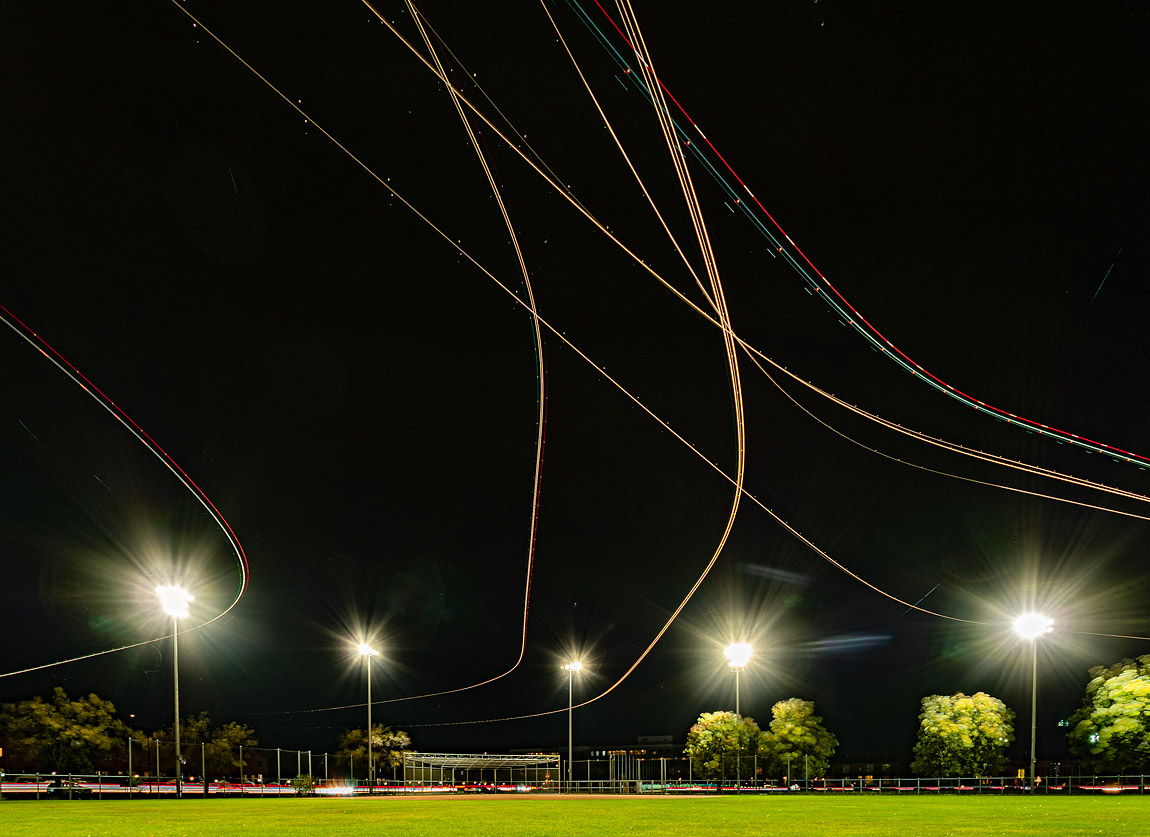This image shows the lights emitted by seven aircraft over 20 minutes. It was captured by my mirrorless camera in a single raw file, and it was made possible using the Live Composite feature.
This image shows the impressionism rendered by this feature.
One night, I installed my tripod, camera, wide-angle lens, and cable release on the edge of a baseball court near my home. With the lights on the aircraft, I wanted to capture the trail in the sky. Over this park, the aircraft turns and heads to Montreal Trudeau International Airport, so I thought it was a good location to capture the light trail.
Let me explain:
Step 1: I framed and composed the image using a 16 mm focal length and turned the mode on. There was no aircraft on the scene. The camera showed me the global scene exposure status.
Step 2: When I pressed the shutter, the camera captured the global scene and kept it in a raw file in its live memory.
Step 3: When I repressed the shutter, at each 0.6-second interval, the camera checked for pixels that were brighter than before and adjusted the global raw file. During this process, I saw the developing image and the histogram progress on the back screen.
Twenty minutes later...
Step 4: I pressed the shutter for a third time to stop the process and save the global raw file. I should call this feature “A smart long exposure.” The battery’s capacity limits this process!
Looking carefully at his image, I was amazed to see all the fine details in the lines and curves. Also, a few star trails were captured!
Only mirrorless cameras can perform such advanced impressionist features.
Honestly, I was happy to practice this feature; it gives me room and comfort for creativity.


